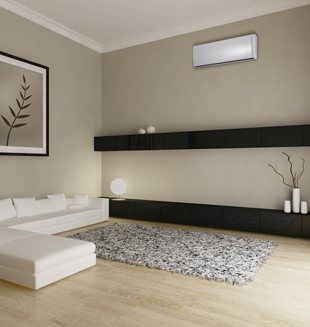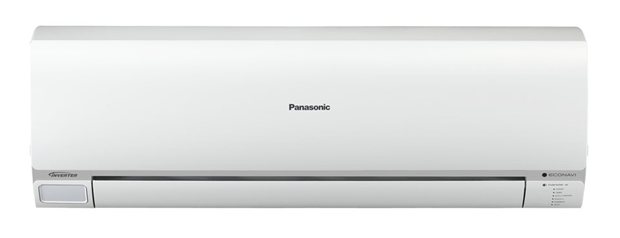Technology has had a profound impact on the way buildings are designed and constructed. From the automated home that can sync a complete home system in one product, to buildings like Macquarie Bank's One Shelley Street, which allows workers to be mobile, new technology is changing the building industry.
Significantly, this technology has had a dramatic influence on air-conditioning products.
Driving this trend is the general push towards more sustainable buildings and more energy efficient products.
"All technological innovation occurring in the air-conditioning sector over the past few years is centered around the increasing demand for energy efficient products. Inverter technology has become mainstream and manufacturers are now looking at ways to make their products smarter in order to save more energy," says Shane Quinn, product marketing manager - air-conditioning, at Panasonic.
In residential buildings, homeowners are increasingly looking to save on energy costs. Meanwhile, in commercial buildings, building owners are looking to provide more incentives for tenants to reside in their buildings and tenants are trying to mitigate rising operational costs.
"Cost, energy efficiency and sustainability are three of the biggest driving factors for any new commercial project design," says Philip Perham, deputy managing director at Fujitsu General.
"More commercial projects are being developed with a whole-of-life cost analysis being a primary concern. This analysis can help establish what the product will cost to install, as well as the running costs for the life of the product and the removal of that product at the end of its life."
Potential changes to regulations
A Standards Australia committee is developing a suite of Standards, collectively AS/NZS 4755, to standardise remote power control of certain electrical products, such as domestic air-conditioners, pool filters, water heaters and electric vehicle chargers.

This could allow energy utilities, in cooperative agreement with their customers, to partially control the output of such products, to better manage peak electricity demand, during hot weather for example, thereby reducing the need for new power generation infrastructure.
Despite new standards not yet in place, Fujitsu General has installed a Smart Demand Control on products.
"[These products] are designed to be operated by way of a demand response-enabling device so that the energy input of the air-conditioner is limited at times of high load to reduce stress on the energy network," Perham says.
Panasonic has also created air-conditioning products with demand response technology in its FSV and Flexi System series.
The ranges also include other key features. For example, the FSV range features a piping length of up to 1000m, which allows an entire office block to run from a single refrigerant circuit. This decreases installation costs by reducing the amount of piping needed for a project.
Meanwhile, piping in the Flexi System series can be extended to 30m without additional gas charging and up to 75m with additional gas charging, providing a wider range of installation options.
New design
One of Fujitsu's newest residential products is its wall-mounted designer range with human sensor control, with the product winning the 2012 Australian International Design award.
While motion sensor lighting has been a design feature of buildings for some time, motion sensor air-conditioning units are relatively new to the market and the product is the first air-conditioner from Fujitsu to include the feature.
The product works by detecting movement in a room. If no movement is detected after 20 minutes, the air-conditioner defaults into energy saving mode. When movement is detected again, the unit returns to its normal operational mode. This allows the air-conditioner to be as efficient as possible.
"How the air-conditioner delivers comfort into the room has also been improved by adopting an open panel design and a new large diameter fan barrel," says Perham. "The introduction of these new features allows a much larger air intake to the indoor unit and better air circulation into the room."
On the commercial front, Fujitsu General's Airstage VR-II for new and existing office buildings allows the temperature to be adjusted to different settings in different areas of the building.
"The inverter compressor also delivers precision speed control in 0.1Hz steps as frequency increases for additional efficiency benefits," Perham says.
Panasonic's commercial air-conditioning range also allows buildings to be divided into zones and the air-conditioning can also be switched off in areas that are not being used, such as meeting rooms.
"The system controller allows the central control of up to 64 units, which can also be grouped into floors and zones. An intelligent touch screen controller allows up to 256 indoor units to be monitored and controlled from one central point," Quinn says.
"The P-AIMS software allows up to 1024 indoor units to be controlled by a single computer, either on-site or remotely. The software also allows load distribution monitoring to accurately record the amount of power used by each tenant."
Improving technology has also meant more features can be compacted into smaller systems, with pressure on manufacturers to create smaller and more unobtrusive products. However, Perham says sometimes improving technology can have a downside on the size of a system.
"New energy efficiency regulations can mean the redesign of a product for better air flow and refrigerant control, such as a new coil design, can lead to an increase in the physical size of products," he says.
On the flip side, Quinn says larger outdoor units can actually provide more energy efficiency.

Increasing consumer expectations
Consumers are becoming more and more educated about electrical products, with a vast amount of products now available and easier ways for consumers to compare them online, such as online reviews and forums.
This has placed pressure on manufacturers to ensure issues such as noise and usability are considered when they are designing products.
"Customers want user-friendly controls with the ability for a high-end interface with home automation and building management systems. This helps to ensure that the overall energy costs for any installation are reduced," Perham says.
As a result of consumer demand for smarter cooling technology, Panasonic has included its Econavi and inverter technology in new residential products, which includes demand response technology.
The Econavi sensor detects several functions - absence or low activity in the room and also sunlight to automatically moderate the temperature according to the room's usage. The company's inverter technology also automatically makes adjustments to ensure the product is operating at its optimum performance.
"This extremely precise operation enables quick cooling when needed while reducing power consumption compared to conventional non-inverter units," Quinn says.
Panasonic has also recently launched an air purification function to catch and deactivate over 99 per cent of the dust and bacteria in the room as it is detected by the air-conditioners. This Nanoe-G air purification feature works via a filter that is positively charged to attract negatively-charged particles in the air.
The future for air-conditioners
The next 12 months could see potential changes to refrigerant types, with the industry, including groups such as Refrigerants Australia, working on developing low impact refrigerants to help minimise emissions from the air-conditioning industry.
As a result of this, Perham says Fujitsu General will be investigating new models with alternative refrigerants to meet expected demand in the future.
"There will be many manufacturers investigating the use of different refrigerants to help try and increase efficiency and reduce the impact of the equivalent carbon levy which has been in place since July 1 under the government's green energy plan," he says.
Perham says evolving Minimum Energy Performance Standards also mean new technology in the market will require products to be as energy efficient as possible.
"There will be a real push for energy management controlling systems in commercial and large residential buildings to ensure overall operating costs are kept at a minimum," he says.

